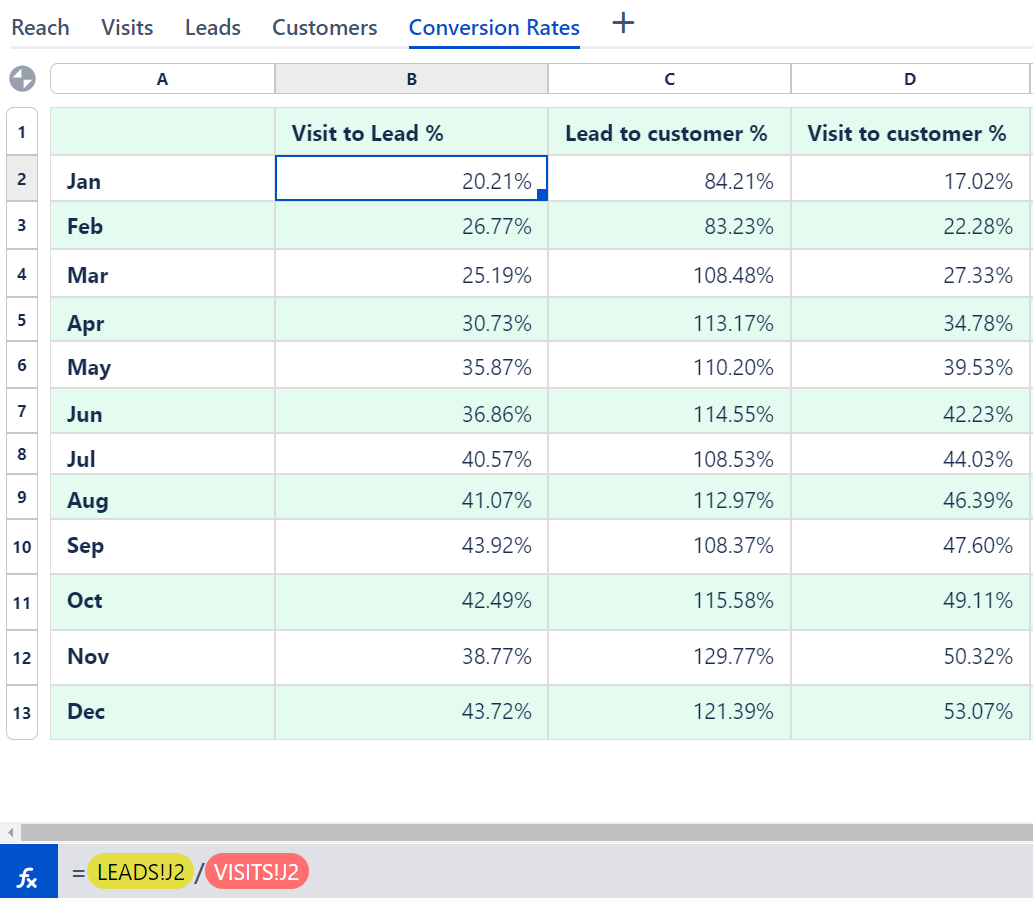Keep track of your marketing campaigns and measure their success
Problem: Marketing teams need to constantly evaluate if their marketing initiatives are bringing results
In today's competitive business landscape, effective marketing campaigns play a crucial role in driving growth and achieving organizational goals. However, launching a marketing campaign is only the first step; tracking its performance and measuring its success are equally important. To ensure optimal results, businesses need a systematic approach to monitor and evaluate their marketing initiatives.
By implementing robust tracking mechanisms and utilizing appropriate metrics, organizations can gain valuable insights into campaign performance, make data-driven decisions, and continuously refine their strategies.
In this use case, we will explore the importance of keeping track of marketing campaigns and how to effectively measure their success, enabling businesses to maximize their marketing efforts and drive sustainable growth.
Solution: Keep track of marketing campaign metrics and measure their performance
Key Benefits
In this tutorial, you’ll learn how to build a marketing campaign performance tracker with Elements Spreadsheet for Confluence. We will focus on the benefits of tracking marketing campaign performance based on certain relevant metrics in a simple yet effective tracker.
Benefit 1: Enhance campaign performance analysis to drive growth
Tracking marketing campaign performance is of utmost importance for organizations seeking to maximize their success and achieve their business objectives. It enables businesses to gain valuable insights into the effectiveness of their marketing efforts and make data-driven decisions to optimize future campaigns.
If you're a marketing nerd, you're probably familiar with terms like reach, visits, leads, click-through rate, customer engagement, and more. So, we won't waste your time explaining them again. But you definitely know how important these metrics are for marketing campaigns.
Organize data logically
Elements Spreadsheet helps you centralize data from your analytics tools and logically organize it in a tabular way based on key metrics of interest.
-min.gif?inst-v=fd220b3e-009e-491b-b8e8-6406be2d59d3)
Measure campaign success with formulas and functions
Formulas and functions help you gain valuable insights into how communication channels perform, identify trends, and make data-driven decisions to optimize future campaigns.

Calculate the visit-to-lead conversion rate by dividing the total number of leads generated by the total number of visits throughout the year.
Here are a few interesting key metrics examples you might want to be tracking to measure campaign success:
Customer engagement
Lead to customer conversion
Conversion rate
Gain valuable insights with charts
Elements Spreadsheet seamlessly integrates with Confluence native charts, which means you can use a Spreadsheet document as a source for a Confluence chart.
Confluence charts offer a wide range of customization options allowing for compelling visualizations.
.png?inst-v=fd220b3e-009e-491b-b8e8-6406be2d59d3)
Line charts are great to visualize how data changes over time
.png?inst-v=fd220b3e-009e-491b-b8e8-6406be2d59d3)
Bar charts help to compare different categories or groups in your data series
Find out how to generate charts from a Confluence Cloud Spreadsheet macro
Benefit 2: Justify marketing investments
Tracking campaign performance helps organizations justify their marketing investments to stakeholders, executives, and investors. By presenting concrete data on the impact of marketing efforts, businesses can demonstrate the value and effectiveness of their strategies. This supports budgeting decisions, resource allocation, and future planning, ensuring that marketing activities receive the necessary support and investment.
Benefit 3: Nail your marketing content strategy by fostering a test-and-learn culture
Tracking marketing campaign performance provides organizations with valuable insights and data that can enhance their content strategy. Here's how it helps:
1. Insights into Audience Engagement: Monitoring campaign metrics identifies the content formats, topics, and messaging that resonate with the target audience, enabling the creation of more relevant and engaging content.
2. Identifying High-Performing Content: Tracking campaign performance pinpoints the most impactful content pieces, allowing organizations to replicate success and allocate resources effectively.
3. Optimization Based on Data: Real-time campaign data guides content strategy optimization, helping make effective decisions regarding content format, tone, messaging, and distribution channels through continuous monitoring, A/B testing, and data analysis.
4. Personalization and Targeting: Analysing campaign metrics helps organizations understand their audience segments better, allowing for the delivery of personalized and targeted experiences that improve engagement and performance.
5. Iterative Improvement: Tracking campaign performance allows for iterative improvement of content strategy through continuous monitoring, analysis, and data-driven adjustments. This optimizes content creation and distribution, identifies areas for improvement, and aligns marketing efforts with evolving audience preferences.
Benefit 4: Share results across the organization and foster horizontal collaboration
Confluence is a tool meant for collaboration. Sharing campaign results in Confluence:
Promotes transparency and alignment among teams by providing access to the same information, fostering a shared understanding of marketing efforts, goals, and outcomes.
Enables data-driven decision making across departments as insights from campaign metrics guide strategic choices related to product development, sales strategies, and customer service, ensuring alignment with marketing goals and improving overall business outcomes.
Fosters a culture of learning and continuous improvement by allowing teams to identify patterns, trends, and best practices from past campaigns, facilitating experimentation, innovation, and ongoing optimization of marketing efforts.
Recognizes and motivates the marketing team by sharing positive results, acknowledging their achievements, boosting morale, and fostering a sense of pride and ownership among team members.
Encourages cross-functional collaboration by providing an opportunity for sales, customer service, product development, and finance teams to leverage marketing insights, align strategies, gain customer insights, and enhance their respective functions for improved overall performance.
